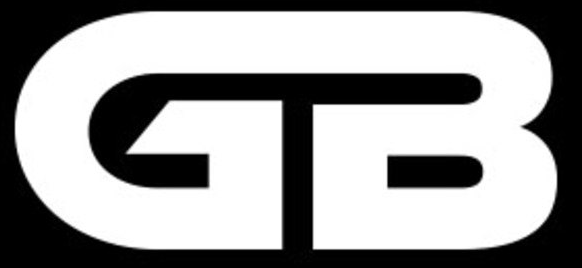The term “oprekladač” may not be immediately familiar to many, but it holds significant relevance in specific contexts. This article aims to provide a thorough exploration of “oprekladač,” delving into its historical development, technological advancements, and its impact on various industries. By understanding its evolution and applications, we gain insight into how this concept has influenced modern practices and technological solutions.
Understanding Oprekladač
The term “oprekladač” is derived from the Croatian language, where “oprekladač” refers to a type of translator or conversion tool. In a broader context, it can be understood as a system or device that performs translation, adaptation, or conversion between different formats or languages. This concept is crucial in many fields, including technology, linguistics, and information systems.
Historical Development
1. Early Concepts of Translation and Conversion
- Ancient Translation Tools: The history of translation tools dates back to ancient civilizations, where early scribes and scholars would translate texts from one language to another manually. These early efforts were crucial in preserving and disseminating knowledge across different cultures.
- Medieval and Renaissance Periods: During the medieval and Renaissance periods, translation was essential for the exchange of scientific, philosophical, and literary works. Translators played a critical role in making knowledge accessible across language barriers.
2. The Advent of Technological Translation
- Early Mechanical Devices: With the advent of mechanical devices in the 19th and early 20th centuries, the concept of translation and conversion began to evolve. Early mechanical calculators and typewriters, while not translators in the modern sense, laid the groundwork for later developments.
- The Digital Revolution: The digital revolution of the late 20th century marked a significant turning point in translation technology. The development of computers and software opened new possibilities for automated translation and conversion processes.
Technological Advancements
1. Early Computer-Based Translation Tools
- Rule-Based Systems: Early computer-based translation systems relied on rule-based approaches, where predefined rules and linguistic databases were used to translate text. These systems had limited flexibility and were often constrained by the complexity of natural languages.
- Statistical Machine Translation (SMT): The introduction of statistical machine translation represented a significant advancement. SMT systems used statistical models to improve translation accuracy by analyzing large corpora of bilingual text.
2. Neural Machine Translation (NMT)
- Deep Learning Models: The advent of neural machine translation, driven by deep learning models, marked a breakthrough in translation technology. NMT systems use neural networks to understand and generate translations with greater accuracy and fluency.
- Transformer Models: Transformer models, such as Google’s BERT and OpenAI’s GPT, have revolutionized NMT by enabling more context-aware and coherent translations. These models leverage large-scale data and advanced algorithms to enhance translation quality.
3. Modern Applications and Tools
- Translation Software: Modern translation software, such as Google Translate and DeepL, utilizes advanced NMT algorithms to provide high-quality translations for a wide range of languages. These tools are widely used for personal, professional, and academic purposes.
- Localization Tools: Localization tools facilitate the adaptation of content for specific regions or languages, ensuring that translations are culturally and contextually appropriate. These tools are essential for global businesses and content creators.
Impact on Industries
1. Global Business and Communication
- Enhanced Communication: The development of translation tools has greatly improved communication between businesses and their international clients. Companies can now effectively engage with global audiences, expanding their reach and fostering cross-cultural relationships.
- Localization and Marketing: Translation tools play a crucial role in localization, allowing businesses to adapt their marketing materials, websites, and product information for different markets. This ensures that content resonates with local audiences and meets regulatory requirements.
2. Academic and Research Fields
- Access to Research: Translation technology has facilitated access to academic research and scholarly articles across language barriers. Researchers can now access and contribute to global knowledge more easily, fostering collaboration and innovation.
- Educational Resources: The availability of translated educational resources has expanded learning opportunities for students around the world. Educational institutions and e-learning platforms benefit from translation tools that make content accessible to diverse learners.
3. Government and International Relations
- Diplomatic Communication: Translation tools are vital for diplomatic communication and international relations. They enable accurate and efficient translation of official documents, treaties, and correspondence between governments and international organizations.
- Public Services: Government agencies use translation tools to provide public services and information in multiple languages. This ensures that essential services, such as healthcare and legal assistance, are accessible to non-native speakers.
Challenges and Limitations
1. Accuracy and Contextual Understanding
- Challenges in Accuracy: Despite advancements, translation tools still face challenges in achieving perfect accuracy. Languages have nuances, idiomatic expressions, and cultural references that can be difficult for automated systems to fully understand and translate.
- Contextual Issues: Translation tools may struggle with contextual understanding, leading to translations that lack coherence or miss the intended meaning. Ensuring that translations are contextually appropriate remains a challenge.
2. Cultural Sensitivity
- Cultural Nuances: Translation tools must account for cultural nuances and sensitivities to avoid misinterpretations or offensive translations. This requires a deep understanding of cultural contexts, which can be challenging for automated systems.
- Ethical Considerations: The use of translation tools raises ethical considerations, such as the potential for biased or inaccurate translations. Ensuring that translation systems are designed and used responsibly is essential for maintaining trust and integrity.
Future Directions
1. Advancements in Artificial Intelligence
- AI-Driven Improvements: Future advancements in artificial intelligence and machine learning are likely to enhance translation technology further. AI-driven models may offer more accurate, context-aware, and culturally sensitive translations.
- Human-AI Collaboration: Collaboration between human translators and AI systems may become more common, combining the strengths of both to achieve higher quality translations. Human oversight can help address the limitations of automated systems and ensure accuracy.
2. Expanding Language Coverage
- Support for Lesser-Known Languages: Future translation tools may focus on expanding support for lesser-known and endangered languages. This will help preserve linguistic diversity and ensure that more languages are represented in global communication.
- Enhanced Language Pairing: Improving translation capabilities for complex language pairs, where one language has limited resources or data, will be a focus. This will enhance the accessibility of translation tools for a wider range of languages.
3. Integration with Other Technologies
- Integration with AR and VR: Integration with augmented reality (AR) and virtual reality (VR) technologies may provide new ways to interact with translations. For example, real-time translation in AR glasses or VR environments could offer immersive and interactive experiences.
- Seamless Integration: Future translation tools may offer more seamless integration with other technologies, such as voice recognition and natural language processing. This will enhance the user experience and expand the applications of translation technology.
Conclusion
The concept of “oprekladač,” or translation and conversion tools, has evolved significantly over time, from early manual methods to advanced digital solutions. The development of translation technology has had a profound impact on various industries, including global business, academia, and government. Despite the challenges and limitations, advancements in artificial intelligence and machine learning hold promise for improving translation accuracy and contextual understanding.
As technology continues to advance, the future of translation tools will likely be shaped by innovations in artificial intelligence, expanded language coverage, and integration with emerging technologies. Understanding the evolution and impact of “oprekladač” provides valuable insights into how translation technology influences global communication and fosters cross-cultural interactions.


